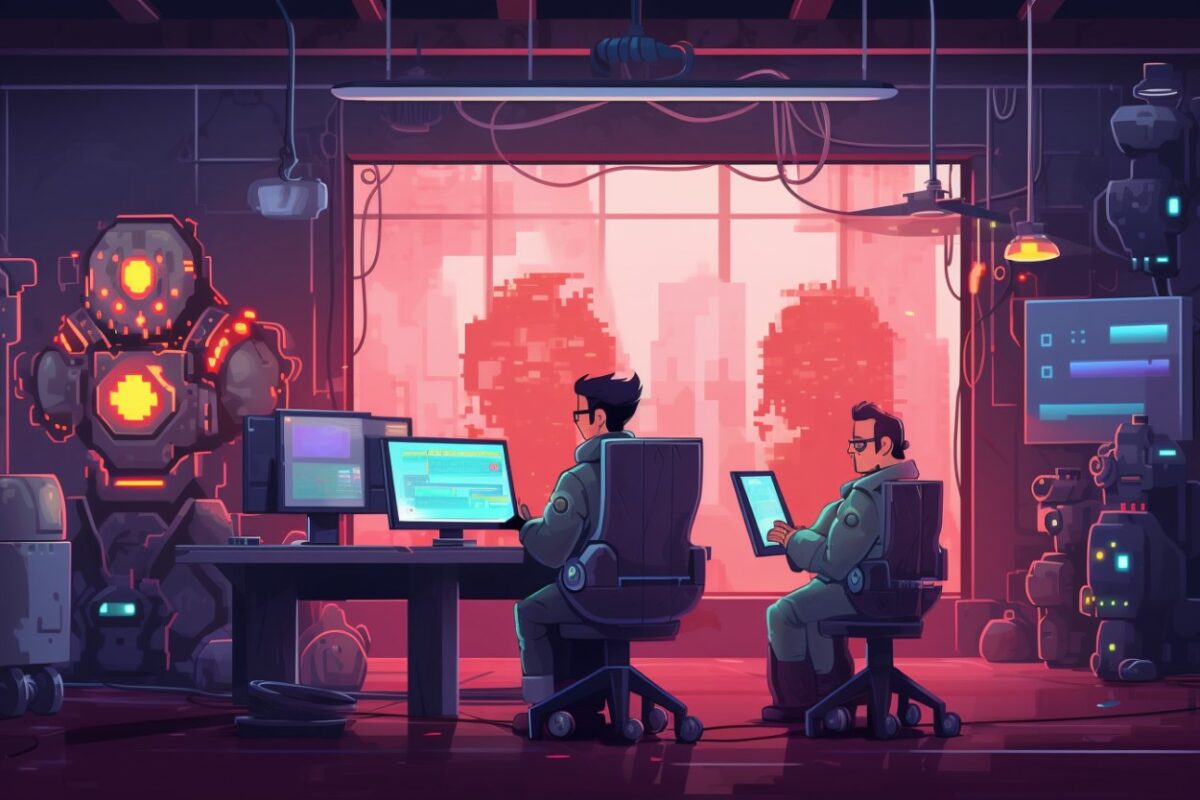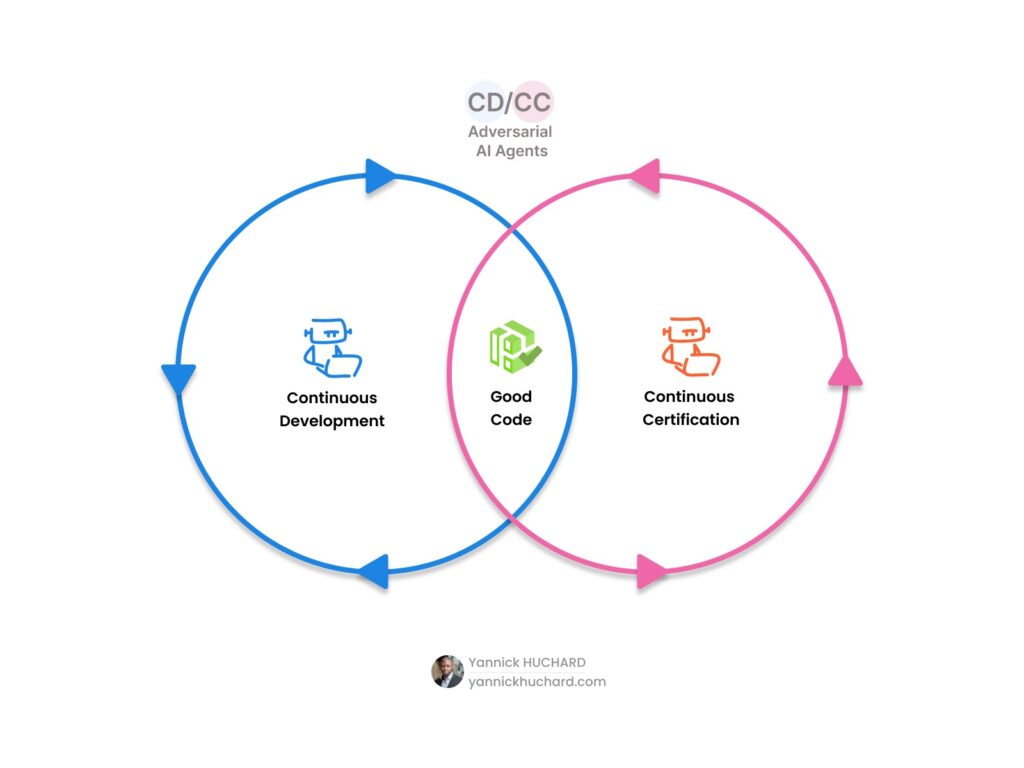“Nasir, check this out. Didn’t I tell you PSG would win against New Manchester? Two bitcoins, baby. Who is the soccer king?”
“Stop bragging, man. Gee, I don’t know how you do it. Hey, Betmania, tell me how this regular human with his XXL ears looking like satellite dishes can beat your prediction. Thank God, you were a freebie AI.”
The bet bot replied, “I am not qualified to review Dr Anoli’s performances. Yet, his 97.26% accuracy is…”
Nasir interrupted the hologram: “Ahh, shut it! It was a rhetorical question. My man! You are good, you gooood.”
He lifted his hand, nodding repetitively to perform his most vigorous handshake.
The upper deck lit up like a lighthouse, and then a deafening sound followed the illumination.
Beeeeeepp. “Emergency. Purple alert. All medical engineers on deck. I repeat, Purple Alert. All medical engineers on deck. This is not a drill.”
My heart was pounding. The message was still resonating in my head.
The sudden drop in temperature, produced by the arch-reactor of the medical drone transporter, announced the arrival of an unusual patient. This is the first time I have seen a flying one. Usually, these vehicles were stored in the Corps of Peacekeepers‘ R&D facilities.
The temperature drop caused a fog to rise like a curtain. I saw a blurry figure approaching slowly.
My colleague interrupted my stupor: “I haven’t seen a purple alert for 7 years now, it’s serious. Purple means death.”
The flying ambulance emerged at the heliport located at the center of the critical emergency service. Work is pretty easy on platform seventeen, actually. Nowadays, bioengineering is solving almost all critical injuries as they occur. An accident at a construction site? Any multifunction robot worker medic cauterizes your wound with accelerated healing enzymes, bypassing block surgery. As long as you’ve subscribed to the right medical service, the AI health model can be downloaded, and the tier two healing kit purchased for printing.
“What on earth could have happened?”, exclaimed Nasir.
The hologram of the AI diagnostician, Dr. Ernesto, popped up from the ambient hospital Phygital network while the paramedics were transporting the patient out of the medical drone transporter. Then, she said:
“This is unprecedented, we are losing it. We’ve tried traditional medicine and printed the generic assistance bacteria. Nothing works. The patient’s vitals fluctuate over time at an unconventional rate. Scanning the available knowledge from the current corpus does not provide any satisfying answers. The highest probable disease is the Genova IV virus with a probability of 31%”.
I replied “Too much uncertainty… What do you suggest, Nasir?”
“It looks like the emerging meta-virus. The… guy on B-Hacker YouTube Entertainment System… Sorry, I can’t remember the name of that journalist… said it was an open-source public CASPRed experiment.”
I could not believe it at first. But when I saw his wound mutating in front of me, there was no doubt that the potential disease was human-made.
“Arrrghhhhh. It burns… Please get it off me. I am begging you. Just cut it!” shouted the patient.
I was stunned. I cannot remember the last time I saw a real person suffering that much. Dr. Krovariv told me about it. This was surreal. So much pain.
“Hey! Gather yourself, buddy. There’s no time to waste. We might be facing a level 5 threat here,” said Nasir.
He was such a great guy. He was the embodiment of coolness. Not only was he a great bioengineer, but he always kept his cool on the field. I was more of a lab genius. I wish I could be more like him.
“Huh, yeah. Sorry, I froze,” I said with a coating of stupor, disappointment, and anger. I continued without hesitation, “What’s the status?”
While he was unplugging the portable bio-scanner from the trembling body, Nasir replied: “Body temperature 39.9. Heartbeats – 137. Adrenaline level 50.5. Oxygen level 92.12%. Stress level is increasing by 2.4% per minute. If we don’t act quickly, he is going to have a seizure. The stem cell differentiation rate… 272%! This is too high. It looks like he is growing a supernumerary limb, but I don’t know what kind.”
“Pick up the nano-extractors and verify traces of xeno-mRNA.”
It was a Sanofi Nano-extractors SNX43, a state-of-the-art fleet of nano-medical machines with a portable management system. Current extractors were all managed centrally by the hospital drone intervention unit.
I quickly put my face next to the patient’s ear and asked, “Sir, I am going to need your authorization to perform an intracellular analysis. We don’t know what you have, this might be your last chance…”
He grabbed my head and screamed, “What the hell are you asking for? Do it! Arghhhh!”
I felt foolish. Yet, there was no way I could bypass the authorization because the device had a legal lock encoded in it.
“That will do,” I whispered. The nano-extractors became operational, switching from blue ‘stand by’ to green ‘proceed.’ The extractors looked like a stick, no longer than a large pen. I placed it next to the wound, and it opened, deploying four branches on each side, and anchoring onto his skin. I heard a sequence of small noises, like pistons. The extractor fleet deployed into his body.
Then a ballet of lights came up. The SNX43 beamed a 3D representation of the arm’s inner part. The system rendered the location of the fleet in real-time.
They moved surprisingly slowly. I was disappointed. I was used to contemplating much livelier robots with the previous version.
Nasir said deductively: “There’s something wrong. They appear to be sucked in or blocked. Zoom in, Nicolas”.
I pinched out the holo-display to enter the zoom command and tapped on the max button. The illusion of slowness came from the fact that the machines were moving at such a speed that it was hard to follow with the naked eye. They looked like bees on steroids, fighting a wall of flesh. But the alien cells rebuilt the wall as soon as it was destroyed.
“I get it; the cellular growth must be faster than the robots can clear the path. It is not good. Not good at all.”
“Have you ever seen something like this before?”
“No…” said Nasir. It was the first time I saw fear in his eyes.
Then he jumped. “It could be contagious. I want all containment units on the platform now. I request a total lockdown of platform seventeen. Now!”
Nasir stopped, then looked at me insistently. I immediately thought something was happening to me.
Then, Nasir froze and fell to the ground.
I jumped immediately to grab him, but something inside me pulled back. My bioengineer spinal safety device prevented me from approaching the new pathogens. Whenever it triggered, it reminded me of the auto-braking mechanisms in my grandparents’ cars. I do not like the idea of having a machine tweaking my neural system. Yet, once more, it saved my life.
“This is not the time,” I whispered. I looked at the sky and said, “Dr. Ernesto. Launch orbital containment in ten. Authorization Kappa-Sigma-Omega-1337.”
Dr. Ernesto answered, “Authorization confirmed. Launching orbital containment in 10, 9, 8…”
“Meanwhile, call the World Health Emergency.”
“Opening channel.”
The dial ended almost instantly.
“Dr. Anoli, this is Dr. Krovariv – replica number 3. State the nature of your emergency.”
“I need to speak to the real Dr. Krovariv. This is a purple priority request.”
“Accepted. Please stand by…”
Time stood still while the platform was flying to space. The quietness of linear magnetic propulsion was staggering. My god. Is Nasir going to make it?
“The patient! I am a monst…”
“Dr. Anoli. What is it about?” Her question interrupted my thoughts.
“Dr. Krovariv. I am sorry, but Nasir has been contaminated by an unknown biological agent. I am heading toward space containment. Furthermore, the patient at the source of the contamination is dying. This agent is too dangerous. Please advise on the protocol,” I finished with a frail voice.
“In this situation, the protocols are clear. Once in space containment, you may use the ‘yellow horizon’ protocol. But you know what will happen if it fails.”
“Yes… I know.”
“I am sorry, son. Since CASPR got open-sourced, we are overwhelmed by these idiots… I am waiting for your decision.”
I had a deep look at Nasir. I knew it would probably be the last time I would see him. It was probably the last time I would see anything else.
I exhaled loudly and said, “Permission to print a new species as a countermeasure.”
“Permission granted. Good luck.”
Asking was the easy part. I was her protégé.
As I was climbing space, the platform changed its path toward a new direction. The Athena Life Engineering Lab, or ALEL, was lighting up like a giant light bulb. It was my dream to one day be worthy of visiting the lab. It was proclaimed as a symbol of hope. But not like this. Not on the verge of my very own death.
ALEL was the only accredited location where humans were allowed to engineer and print new life forms. No one was allowed to penetrate the labs.
Akin to the Athena Orbital Data Centre, it was solely operated by robots and machines following a strict chain of command.
Soon after, the platform slowed down, then stopped near the lab, and the docking system engaged to secure the system. A muffled noise gave me the chills.
“Welcome, Dr. Anoli. My name is Marie Curie. You have been granted the usage of the Athena Life Engineering System by Archdoctor Krovariv of the World Health Organization on the date of 30th December 2060. Any inquiry going against the principles of life and Human Civil Rights will result in your immediate termination. Do you want to hear these principles?”
“No, thank you. I already vowed to fight for life when I became a biomedical engineer.”
“Understood. Please state your prompt, please.”
I thought to myself, “What? Just like that?”
“Marie Curie, I need you to engineer a biological agent to counter Dr. Nasir’s condition. Focus uniquely on alien gene alteration and accelerated growth features. Do not augment the agent with inorganic material. Do not add metamorphic adaptation capabilities. Encode the maximum life duration to be 72 hours. Add automatic degeneration from 70 hours as a failsafe mechanism. No reproduction. No replication. I need you to confirm the supernumerary growth first before proceeding.”
“Supernumerary growth confirmed. Your prompt is acceptable. Proceeding to the registration of the new specimen identified by Anoli-alpha-31122060-001. Beginning prototyping phase.”
As I reached the point of no return, I could not help but wonder if our life would end here. ALEL was a universal robotic womb. What would happen if I asked the Life Factory to… recreate Nasir… Is rebirth possible?












